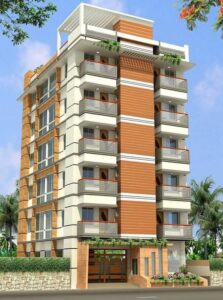
Exploring the Architecture of Six Story Houses
Have you ever wondered what makes a six-story house not just a towering structure, but a home? Today, we delve deep into the architectural marvels of six story houses, exploring their design, functionality, and the unique lifestyle they offer.
Why are six-story houses becoming a popular choice in urban landscapes?
From the integration of modern amenities to the challenges posed by such tall structures, we will explore every facet of living the high life in a six-story house.
Understanding Six-Story Houses
Definition and Characteristics
What exactly qualifies as a six-story house? Typically, these are residential buildings that stretch over six levels, including the ground floor. They often stand out in suburban areas but are increasingly seen in urban settings due to their efficient use of vertical space.
Common Architectural Styles
Six-story houses can vary widely in style, from modern steel and glass structures to traditional brick-and-mortar designs. Each style not only reflects aesthetic preferences but also responds to environmental and cultural contexts.
Historical Context
Evolution of Multi-Story Residential Buildings
The concept of vertically stacked living spaces is not new and can be traced back to ancient civilizations. However, the modern six-story house has evolved significantly, influenced by technological advancements and increasing urban densities.
Influence of Urbanization
As cities grow denser, the push for upward expansion becomes inevitable. Six-story houses are a direct response to the need for more housing in limited urban spaces.
Architectural Features of Six-Story Houses
Design and Layout
The typical floor plan of a six-story house maximizes space without compromising on comfort. Key considerations include the strategic placement of living areas, bedrooms, and service spaces to optimize flow and functionality.
Importance of Vertical Space and Natural Light
In taller residential structures, the management of vertical space and natural light becomes crucial. Architects often employ open floor plans and large windows to enhance the sense of space and light.
Materials and Construction Techniques
Common Materials
Materials like reinforced concrete, steel, and glass are commonly used due to their strength and durability, which are essential for taller structures.
Innovative Construction Techniques
Modern construction techniques such as modular building and prefabrication are becoming popular for their time and cost efficiency, particularly suitable for six-story constructions.
Sustainability and Energy Efficiency
Eco-Friendly Design Elements
Many six-story houses incorporate green roofs, solar panels, and energy-efficient windows to minimize environmental impact and reduce operational costs.
Energy-Saving Technologies
Advanced HVAC systems and smart home technologies are often integrated to enhance energy efficiency and comfort in six-story houses.
Market Trends and Availability
Current Market for Six-Story Houses
Six-story houses are particularly popular in metropolitan areas where space is at a premium. They often attract a diverse demographic, from young professionals to larger families looking to maximize their urban lifestyle.
You may also read (how did ancient egyptian houses look)
Factors Affecting the Demand
The demand for six-story houses is influenced by factors such as location, accessibility, and the quality of amenities offered.
Investment Potential
Benefits of Investing
Investing in a six-story house can offer substantial returns due to their desirability and limited availability in urban centers.
Comparative Analysis
When compared to other residential properties, six-story houses often offer a better return on investment due to their unique position in the real estate market.
Unique Features and Innovations

Incorporating Modern Amenities
From rooftop gardens to in-house fitness centers, six-story houses often feature amenities that enhance the living experience.
Case Studies
Innovative examples include six-story houses with internal slides or retractable walls, blending functionality with fun and creativity.
Challenges and Considerations
Regulatory and Zoning Issues
Building a six-story house often involves navigating complex zoning laws and building codes, which can vary significantly by region.
Structural and Safety Concerns
Ensuring the structural integrity and safety of six-story houses is paramount, requiring rigorous standards and regular maintenance.
Cultural and Psychological Aspects
Cultural Significance
In some cultures, multi-story houses symbolize wealth and success, while in others, they are a practical response to urban conditions.
Psychological Impact
Living in a six-story house can affect everything from one’s social interactions to privacy levels, influencing overall well-being.
Conclusion
Recap of Key Points
Six-story houses offer a unique blend of modern amenities, efficient use of space, and architectural beauty, making them a coveted choice in dense urban settings.
Future Outlook
As urban areas continue to grow, the popularity and innovation in six-story house designs are expected to rise, shaping future residential trends.
Call to Action
Whether you’re considering purchasing a six-story house or simply curious about this architectural form, exploring these structures can provide deeper insights into urban living.
Additional Resources
Further Reading
For those interested in learning more about architecture and six-story designs, numerous books and articles are available that delve deeper into these topics.
Contact Information
Architects and real estate agents specializing in six-story houses can provide valuable guidance and detailed information for potential buyers or builders.
You may also read (unveiling dover house london the historic heart of whitehall)


